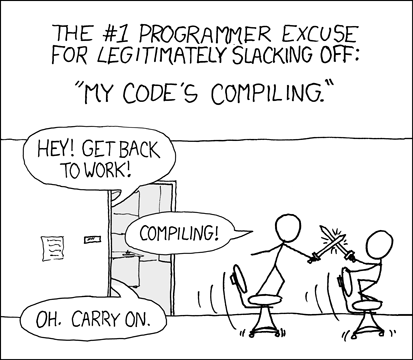For a long time my go to place for doing small incremental learning exercises for Salesforce has been the Salesforce Stackexchange site. It was my Trailhead before Trailhead existed.
If I had a spare 5 minutes due to a long compile, or similar, I'd typically look for questions that I knew a bit about and then research the gaps in my knowledge to hopefully provide the answer. This was great for a number of reasons:
- I was helping a fellow Salesforce developer/admin.
- It was someones real world Salesforce problem. Chances are that I'd run into the same or similar problem at some point.
- I had a focused reason for going into the documentation. Reading the docs front to back is a bit like reading the dictionary. Yes, you could probably learn lots, but I was more likely to learn something if I had a specific goal.
- Typically it didn't require a great deal of time to answer a question if I already knew part of the problem. I could do some quick research through the documentation and/or put together a basic prototype.
- Maybe I got the answer wrong. That's OK too, as I can either revisit it or learn more from another users answer.
- Sometimes I'd stray into areas of Salesforce where I had very little experience. It was a great excuse to at least get familiar with a new area or feature.
From the last point, it was often the case that the more I learnt about Salesforce the more I knew I didn't know. This is still very much the case.
Trailhead
Now there is Trailhead, which provides a focused guide through specific areas of Salesforce in manageable chunks. So if you have 15 minutes to spare you can work through a small exercise to explore new areas. They are usually evaluated with either some applicable questions or, better yet, Salesforce will use the various APIs to either inspect the state of the org and execute functionality to see if you have completed the given tasks.
One area I'd been meaning to investigate but hadn't got round to yet has been the Event Monitoring, which was introduced in the Winter '15 release. I've been skimming through Adam Torman's blog posts on it for some time and meaning to crack open the APIs and have a poke around at the available data.
When the Trailhead Event Monitoring Module appeared it was the perfect excuse to delve into the workings. As a module I knew all the parts I needed to get started with the API would be contained in one place, so I could work through each of the challenges as I got a few minutes to spare.
This module differs a bit from others, as it requires interacting with the APIs directly. The first part of the module does a good job of easing admins into accessing the REST API if it was previously a foreign concept. In many ways it provides a good reason to poke around in the SOAP and REST APIs. Doing so using Workbench to interact with the REST API saves you from having to handle session authorization headers and formatting the responses.
After completing the module it turns out accessing the Event Monitoring data is really easy with the existing tools at hand. For example, I can use a SOQL query to pull the available logs. Once you have the required Id then pull the LogFile field with the CSV data.

One of my earlier experiences with Trailhead was handling problems when using an older Org that was full of testing data. The anonymous apex that Salesforce was using to test the code was trying to insert a new record, and was encountering a storage limit exceeded error. See details in Troubleshooting Salesforces Trialheads execution of Developer Edition org code
Dreamforce
With Dreamforce 2015 just around the corner it would also be timely to do the #DF15 module. It helps with pressing questions such as:
- Should I attend the keynotes?
- Where do I get more information to stay updated?
- What should you pack in your bag?
I put some notes together on my #DF14 experience for things like on site food.


